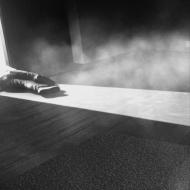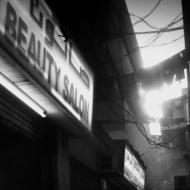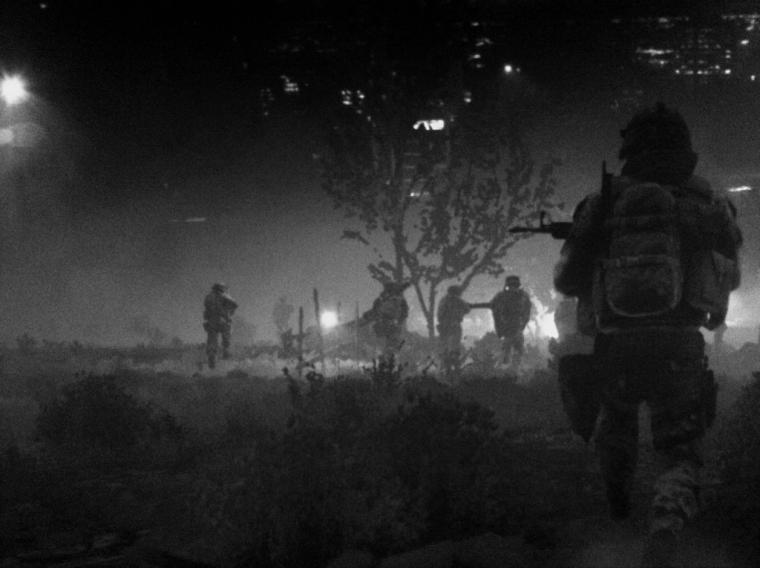Screenshot deluxe: Joshua Taylors "A Distant Sadness"

Joshua Taylor was one of the screenshot artists I featured in my original article on in-game photography; his series "A Distant Sadness" collects haunting images of a war-torn Battlefield 3. I asked Josh a few questions on his latest project.
What was your inspiration for "A Distant Sadness"?
There really wasn't one particular photographer in history. The inspiration came from the culmination of work within the genre of "war photography". It was and is beautiful yet haunting.
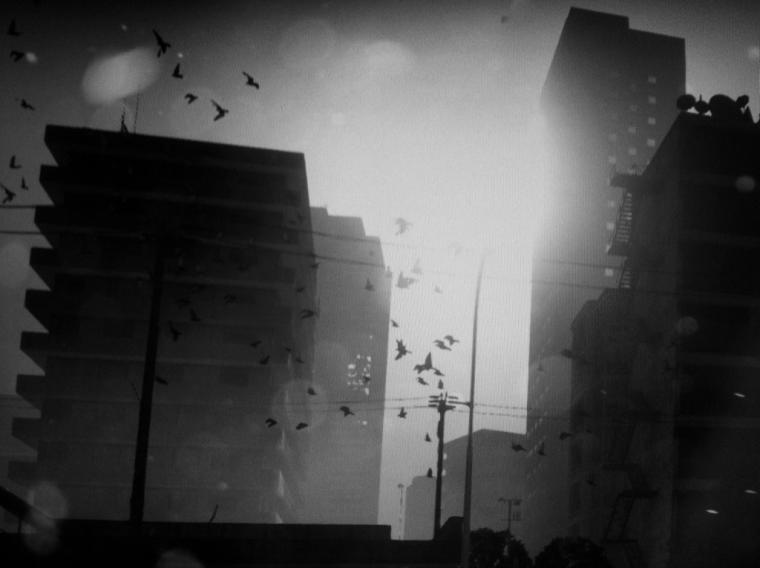
Please describe the "camera phone technique" used in "A Distant Sadness".
It varies game to game, in Battlefield 3 it was mostly switching back and forth from weapons and trying to capture the overall "image" in between the animation (where you wouldn't see the weapon on the screen). In the more "fast paced" moments, it was mostly me capturing the intended image at the top left of the screen.After getting the "screenshot", I would close the game, find the image, pull it up on fullscreen, and capture the image I was seeing via my iPhone (or Droid X if referencing back to my first work on camera phone technique). This would give the particular effect I was going for within this project.
In_your_"experimental" category on Flickr, you break an unwritten "taboo" of in-game photography by using postprocessing and/or artistic editing techniques. What was the feedback like?
Some people love it, others hate it. It is what it is, honestly. If done good, I believe the work compliments the games and developers. It shows their work in a slightly different light.
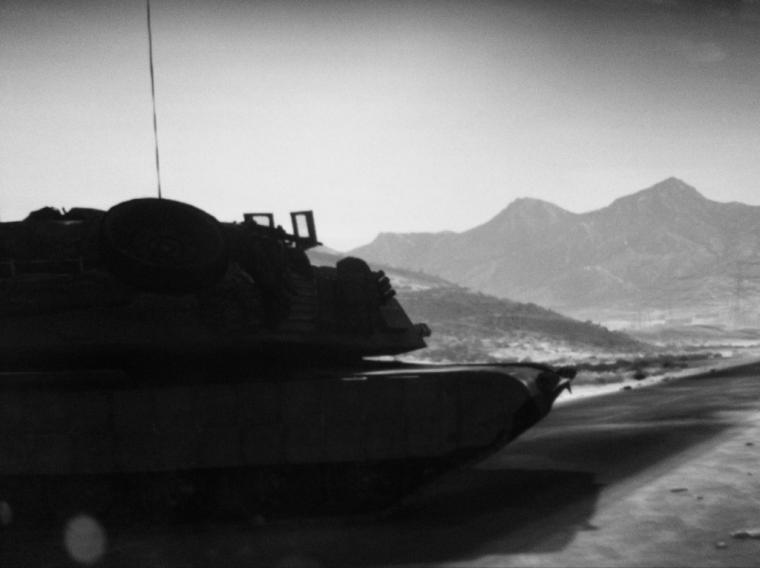
Kent Sheely's projects "Stories of War" and "DoD" treat war games as virtual war zones which generate images and (hi-)stories. What's your stance on this - are games a middle ground between reality and simulation?
If we are strictly speaking on the grounds of whether or not "multiplayer" could be seen in that perspective; my answer would be absolutely!Every person within multiplayer "warzones" is creating a story of their own, all of which are beautiful in their own right. The fact is, its hard to document in an artistic sense. When you attempt to document these stories, the common conclusion is - you're seen as an easy target for the opposing side. So before you can snap that perfect shot that COULD potentially encompass that entire playerbase's experience... you're shot and/or dead.But sometimes you can get shots like this one, which was taken in multiplayer Battlefield 3. I forgot to catch the guy's player name - so he is, for now, an unknown player.In many ways this is one of my favorites ever shot. It isn't all that pretty (you can see the monitor lines), but at the same time it captures something that DID happen. It captured a real experience of one Battlefield 3 player.
Militainment is a multi-million dollar industry, the lines between 'realistic' military simulation, entertainment, propaganda and news reporting blurring. Is "A Distant Sadness" meant as a commentary on this as well?
From my own perspective, it is not. It was simply something I saw in my head and decided I wanted to do in a project. As for what it becomes for others, that's for them to decide.
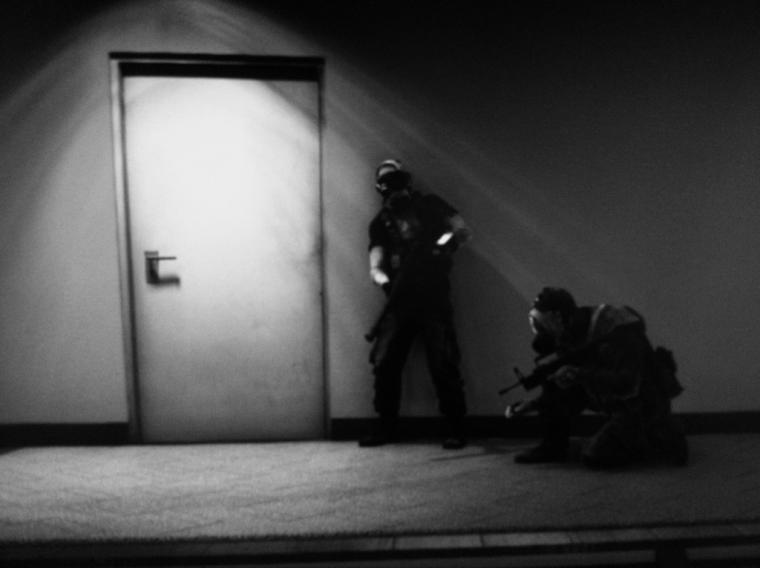
The b/w style of Sadness and the blur is reminiscent of Robert Capa's famous d-day pics. Was this just a question of aesthetics? Do you see current war photography as an inspiration at all?
Honestly, it was simply a matter aesthetics. I had experimented in the past with color vs b&w in this realm. In conclusion, I felt that b&w was so much more "to the point" and powerful. Looking back on it though, it is very reminiscent of Robert Capa's work. It's humbling to think someone thought of his work when looking at A Distant Sadness.As for modern day war photography as an inspiration, in some ways yes, it was. It had less impact on the style and aesthetics and more on the content/subject of each image. To tell you the truth, it's hard for me to explain.
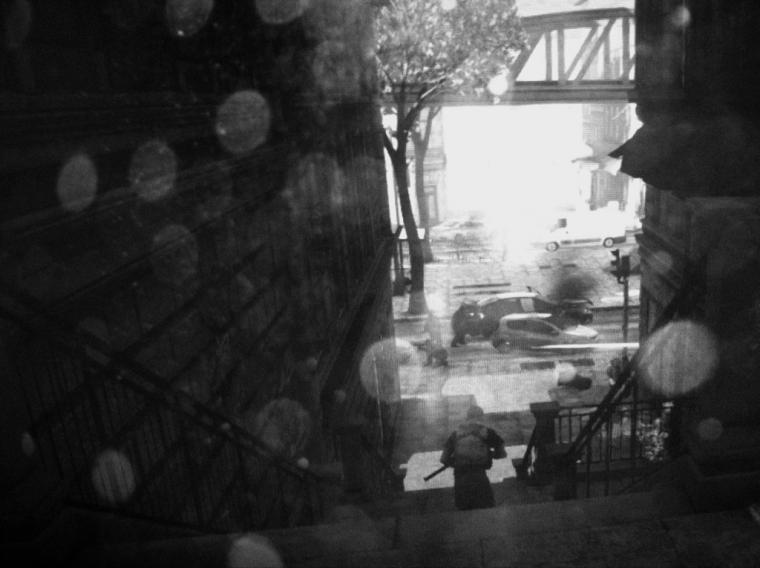
In closing, a general question: What is, for you, the most interesting aspect of in-game photography?
Seeing these virtual worlds within the eyes of photography. As real world photography captures the magnificence of creation and the pitfalls of man. In-game photography, at the very core, captures the brilliance of the human mind and the imagination, whether it be dark or light, within each one.
The complete series can be seen here on Flickr.
Freitag, Mai 16, 2014 - 13:07


